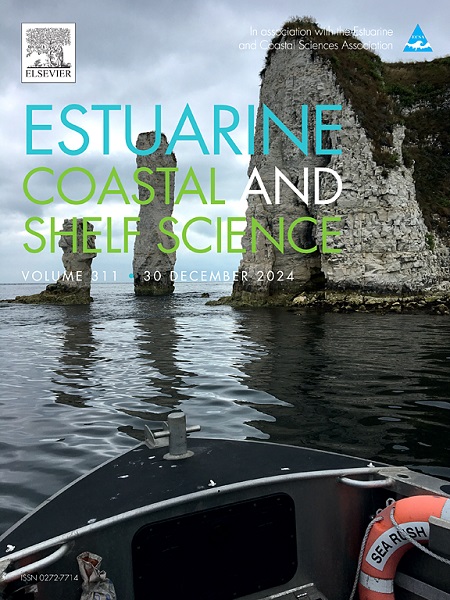Possible processes responsible for the decline in the stock of Manila clam based on long-term observations in Banzu tidal flat
IF 2.6
3区 地球科学
Q1 MARINE & FRESHWATER BIOLOGY
引用次数: 0
Abstract
In this study, we conducted three surveys of the Manila clam, Ruditapes philippinarum, in the Banzu tidal flat, Tokyo Bay, from the late 1980s to early 2020s. The surveys included core sampling at six sites along the onshore–offshore transect line to assess density changes after settlement, fishing gear sampling at 64 sites to examine changes in clam distribution across the area, and sampling at 14 sites to monitor changes in condition index. We identified two seasonal cohorts of clams per year derived from spring and autumn spawning, which consisted of complementary and primary components, respectively, to create the next-generation clam stock. The decline in the autumn spawning cohort is a fundamental aspect of the decrease in clam stocks in Banzu. This decline was attributed to reduced survival after settlement, primarily affecting relatively large individuals with a shell length (SL) of approximately >20 mm. As the autumn cohort reaches an SL of >20 mm only after the summer following spawning, it is assumed that size-dependent factors affecting clams with SL > 20 mm after summer were responsible for the recorded decrease in clam stocks in Banzu. Thus, the decline in Manila clam stocks can likely be attributed to mortality from energy loss associated with spawning under oligotrophic and high-temperature conditions and increased predation pressure of black porgy populations with synergistically acting reduced burrowing ability of clams because of low water salinity.

根据班祖潮滩的长期观测,可能导致马尼拉蛤种群数量下降的过程
在这项研究中,我们从20世纪80年代末到21世纪20年代初在东京湾的Banzu潮滩对马尼拉蛤(Ruditapes philipparum)进行了三次调查。调查包括在岸上和近海样带线上的6个地点取样取样,以评估沉降后的密度变化;在64个地点取样渔具,以检查整个地区蛤的分布变化;在14个地点取样,以监测条件指数的变化。我们确定了每年从春季和秋季产卵的两个季节蛤群,它们分别由互补和主要成分组成,以创建下一代蛤群。秋季产卵群的减少是板祖蛤种群减少的一个基本方面。这种下降的原因是定居后存活率降低,主要影响壳长约20毫米的相对较大的个体。由于秋季种群仅在产卵后的夏季之后才达到20毫米的SL,因此可以假设影响SL的大小相关因素;夏季过后20毫米是板足蛤种群减少的主要原因。因此,马尼拉蛤种群数量的下降可能归因于在营养不良和高温条件下产卵时能量损失造成的死亡,以及黑蛤种群捕食压力的增加,同时由于低盐度而降低了蛤的挖洞能力。
本文章由计算机程序翻译,如有差异,请以英文原文为准。
求助全文
约1分钟内获得全文
求助全文
来源期刊
CiteScore
5.60
自引率
7.10%
发文量
374
审稿时长
9 months
期刊介绍:
Estuarine, Coastal and Shelf Science is an international multidisciplinary journal devoted to the analysis of saline water phenomena ranging from the outer edge of the continental shelf to the upper limits of the tidal zone. The journal provides a unique forum, unifying the multidisciplinary approaches to the study of the oceanography of estuaries, coastal zones, and continental shelf seas. It features original research papers, review papers and short communications treating such disciplines as zoology, botany, geology, sedimentology, physical oceanography.

 求助内容:
求助内容: 应助结果提醒方式:
应助结果提醒方式:


